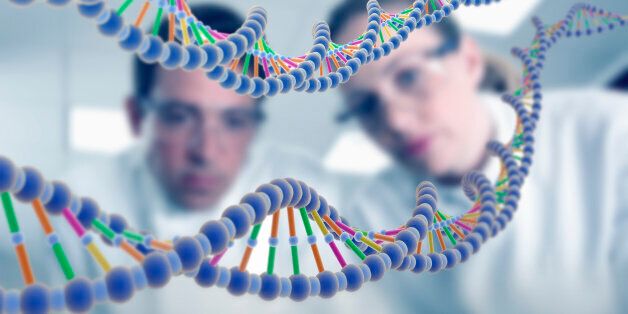
There are about 6,000 different known genetic disorders in the world. It is estimated that one in 25 children in the UK is affected by a genetic disorder, equating to around 30,000 babies and children being newly diagnosed each year. Some genetic disorders are apparent at birth while others are diagnosed at different stages throughout childhood, and sometimes into adulthood. It is in fact highly likely that every person knows at least one person in their life that has a genetic disorder, yet many people are not aware exactly what a genetic disorder is.
As a Genetic Counsellor for Jeans for Genes, ahead of Jeans for Genes day on Friday 22nd September, I am striving to make the public aware of some key genetic disorder facts.
Through my work, I interact with families affected by genetic disorders on a daily basis, and it is important for everyone to be aware of what a genetic disorder can really mean. As I also have a genetic disorder myself, having been diagnosed with Retinal Dystrophy at the age of six which affects the retina at the back of the eyes, I can also talk from personal experience about this. Below I have outlined eight facts people should be aware of.
- There are thousands of different genetic disorders, all with unique symptoms that affect an individual's mental and physical health very differently. Some of the most common conditions include Cystic Fibrosis, Down's Syndrome, Neurofibromatosis and Sickle Cell Anaemia. However, there are lots of other genetic disorders that many may not have heard of such as the skin disorder Epidermolysis Bullosa, where skin can blister at the slightest touch, Treacher Collins syndrome which affects the development of bones and other tissues of the face and the neurodegenerative condition Batten disease.
- Once a genetic condition has been identified in a family, it can be possible to counsel family members about the chance of passing the condition on. The chance of a condition being passed down stays the same for each pregnancy so for example, if a mother and father have a 1 in 4chance of their child inheriting a genetic disorder, this chance will remain the same for each child they have.
- Some genetic disorders affect males and females differently. As females have two X chromosomes and males have one X and one Y chromosome, if there is a genetic change in a gene on the X chromosome a male can develop symptoms where as a female may only have mild symptoms or no symptoms at all. For example, the genetic condition Duchenne Muscular Dystrophy affects males, whereas females can be unaffected carriers.
- It is rare, but sometimes a genetic disorder can occur in a child due to a new spontaneous change in the DNA sequence of a gene, which has not been inherited from either parent. This is not because of anything anyone has done or not done, but is due to a natural process which introduces greater genetic variation.
- While many genetic disorders are caused by changes in single genes, there are others that are due to changes to chromosomes. For example, Down's syndrome is caused by having an extra chromosome-individuals with the condition have three copies of chromosome 21, instead of the usual two.
- Some genetic conditions are extremely variable, with some people being affected severely and others mildly, even among members of the same family who have exactly the same genetic change causing their condition. It is thought that other genes, and to some extent environmental factors, also play a role.
- Genetic technology has advanced significantly in recent years but we still do not know the genetic cause of every genetic condition. Across the world, new genes are being discovered almost every day.
- Once a genetic disorder has been identified, while it cannot be cured, there are many treatments and interventions available that can help ease symptoms. There is also a huge amount of research ongoing to improve treatments and develop new therapies for the future. Support is also readily available to children, families and support networks, through charities such as Jeans for Genes.
Jeans for Genes Day takes place on Friday 22nd September.
To sign up for your free fundraising pack visit https://www.jeansforgenesday.org/